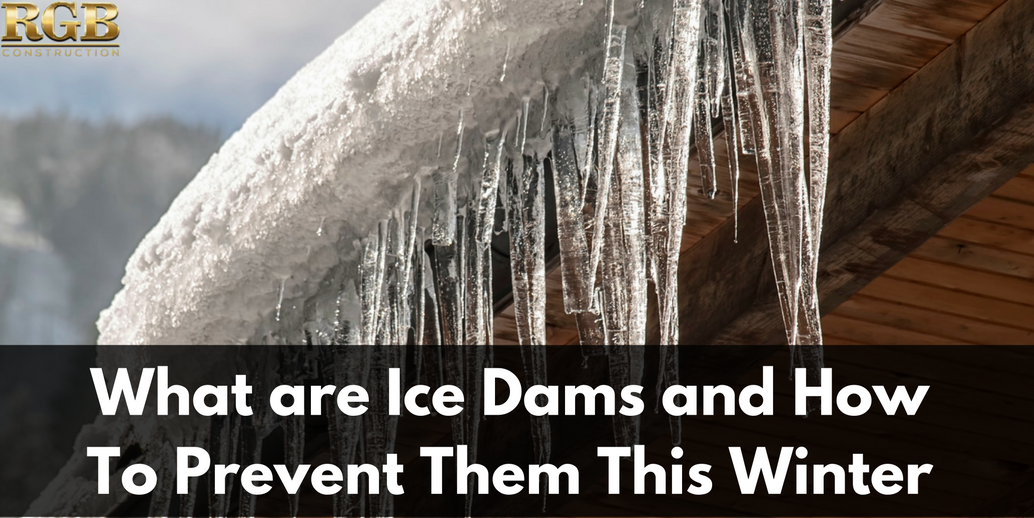How Do Ice Dams Form?
An ice dam is caused by an accumulated amount of snow on the roof of a home. The dam is actually formed through the warmth of attic air, which is hot enough to melt the snow on the underside of the accumulated snow. The melting action causes water to trickle down between the snow on the roof and the shingles of the roof. When the water reaches the eaves of a roof, it remains cold because of the cover that the eaves create. At that point, the water freezes, increases in size and eventually becomes a mound of ice, or ice dam.
When the roof of a home has a flatter pitch, an ice dam is more easily formed and remains in place, plus the gutters near the eaves can also trap snow and ice and if the buildup is at a high enough point within area of the gutters, it can help form the necessary base for an ice dam.
Can Ice Dams Cause Damage?
Ice Dams can cause damage when they increase in size, as the melted water that feeds them will back up behind the dam and leak underneath the shingles of a roof. The leakage will eventually get into the insulation, into the ceiling and outside walls underneath the eaves. Drywall and paint will be ruined and if the ice dam is warmed enough, it can dislodge itself and take shingles and gutters away as well. As it falls from the roof, it can damage windowsills, landscaping, vehicles, animals and anything in the vicinity of the ground. The roof’s sheathing, or the material on top of the roof’s structure, can also be affected and begin to rot and form mildew if it remains wet for any length of time.
How to Prevent Ice Dams In New Jersey
Ice Dams can be prevented through getting rid of snow accumulation on a roof. It needs to be done carefully and cautiously with a snow rake from the ground or by a plastic shovel or broom at the roof level. You can find yourself suddenly inundated with snow at the ground level or easily slip at roof level, so for safety sake, it is best to hire a roofing specialist who is familiar with snow removal and safety line use.
Another preventative measure would be to replace a shingle roof with a metal or standing seam roof. There is also the option of replacing the last several feet of a shingle roof with a metal drip edge that is wide enough to help alleviate moisture buildup. Utilizing water-resistant material under any new roofing application will also help in preventing ice dams.
Keeping a roof cold (particularly the underside) is one more way to prevent ice dams. Sufficient insulation, sealing of any gaps, and proper ventilation of an attic also help in allowing warm attic air to escape. When a roof is warm, snow accumulation melts quickly but when it meets the colder areas surrounding the eaves, any water can freeze and create ice dams.
What to do if you have an Ice Dam
Though preventative measures are of help with ice dams, there are always going to be problems because of a warm roof that is usually the result of poor insulation and improper venting. In order to resolve both issues, consulting with RGB Construction about what can be done to resolve ice dam issues should be a strong consideration. We will explain the process of sealing points of warm air leaks, insulating living areas to prevent heat loss through the ceiling and venting any spaces that lie between insulation and roof sheathing. Speaking with an expert that is familiar with frigid South Jersey winters and what can happen with an exposed snow-covered roof and warm attic air flow is a strong recommendation.
Resolving problems with ice dams and preventing them is important to the integrity of the exterior and interior of a home and its roof, and communicating with a roofing specialist at RGB Construction is the best way to deal with the issue. Complete the contact form and an expert will get back to you with the information you need to both prevent and end ice dams and the damage they can cause.







